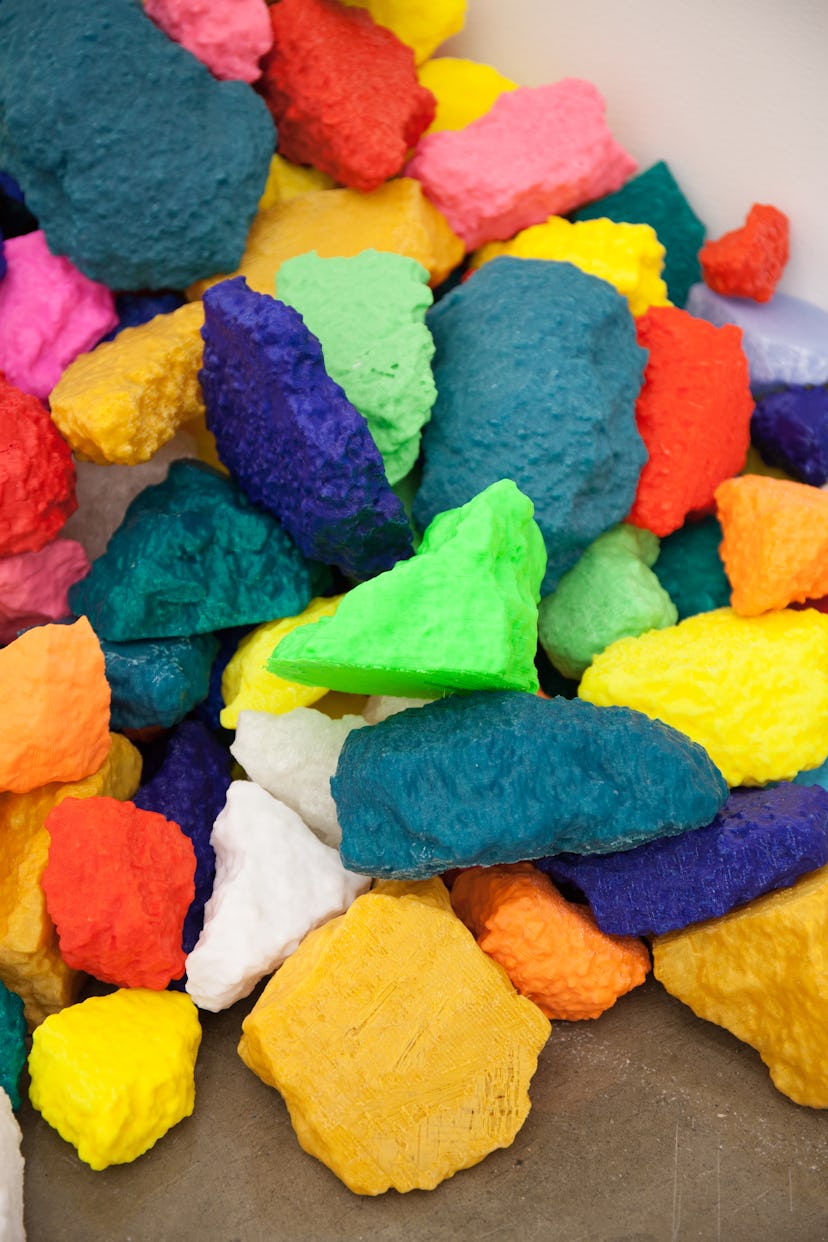Glenn Kaino’s Social Experiment

There are two ways to draw a crowd to a difficult subject: you can make a loud noise, or you can wrap it in an attractive package. “Aesthetics matter to me a lot,” says the conceptual artist Glenn Kaino, a protean talent—former Chief Creative Officer of Napster, senior executive at Oprah’s media company—who is known in the art world for his social engagement. “If something is sterile or uninviting or unpleasing, then it’s just sort of academic.”
Case in point: A couple weeks ago, on a late Saturday afternoon, fans streamed out of a baseball game in Washington, D.C., to be met by the sight of a shiny, serpentine footbridge catching the sun through the windows of a nearby naval building off the Anacostia River. Entranced, they walked into the opening of Kaino’s public art installation Bridge, a glittering sculpture suspended in mid-air, whose steps are actually golden casts of the arm of Tommie Smith, the American Olympian who famously raised his fist to the world in a symbol of black power at the 1968 Mexico City games. “I think about 1,500 people came in because they spotted it from the stadium,” Kaino recalls. “If it were a lecture, or a sermon, then those 1,500 people would not have engaged the way they did.”
Kaino is about as engaged as artists come. His new solo show, opening September 19th at Kavi Gupta gallery in Chicago, is rooted in the time he spent in Cairo, in 2011, right before the tumultuous elections that started the Egyptian revolution. He recalls going up to the room in his hotel off Tahrir Square, turning on CNN, and hearing the live report: “There are 20,000 people in Tahrir Square!”
“And I looked out the window,” Kaino says, “and nobody’s there.” He laughs incredulously. “This show is a dialogue about subjectivity, and how memory attaches itself to an image, or how history attaches itself to a catchphrase,” he explains. “And it’s about the division between action and symbols.”
Perhaps the most identifiable symbol of street protests is the rock—whether it is shaken in threat, or thrown in anger. Starting with a rock he collected in Tahrir Square, Kaino asked his network of activists and artists around the world to send him specimens from sites of protest in Afghanistan, Athens, Turkey, China, Thailand, and Yemen, among others. Then he heaved them at mirrors that he treated so the glass would splinter to achieve a “very liquidy result,” he says of the works in the show.
Kaino is well aware that the exhibition has a timely potency in the shaky aftermath of Ferguson, even though he has been working on it for over a year. He even went to Missouri so that he could talk to the locals there, without the noise of the media’s various narratives. “It’s important to get their read,” he explains.
Although Kaino doesn’t mistake himself for an activist, being on the ground does reinforce the belief that art can have power, and agency. At the opening of Bridge in D.C., Kaino recalls older African-Americans, who remember Tommie Smith’s iconic salute, approaching him in tears. More than one person confessed, “My mother would never let me have this idea.”
“What do you mean?” Kaino replied.
“The idea for that salute—or that I could be an artist.”
Photos: Glenn Kaino’s Social Experiment
Topple Immortal. Courtesy of Kavi Gupta
Detail of Don’t Bring a Gameboy. Courtesy of Kavi Gupta
Suspended Animation. Courtesy of Kavi Gupta
Detail of Stones Don’t Throw Themselves. Courtesy of Kavi Gupta
Excalibur 2. Courtesy of Kavi Gupta
Repay A Period Syria. Courtesy of Kavi Gupta
Detail of Repay A Period Athens. Courtesy of Kavi Gupta